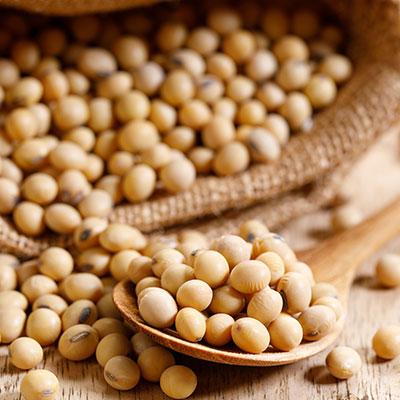Porto Alegre, January 17, 2021 – Unfavorable weather conditions, with rainfall well below expectations, in the states of the Southern Region and Mato Grosso do Sul are forcing producers to project losses and recalculate the size of the Brazilian soybean crop in 2021/22. The drought extends through Argentina, Uruguay, and Paraguay and has been the main issue to be evaluated in the international commodity market.
Brazilian soybean production in 2021/22 must total 132.33 mln tons, down 4.2% from the previous crop, which stood at 138.1 mln tons. The estimate was released by SAFRAS & Mercado last Friday (14).
In November, when the previous report was released, the projection was 144.7 mln tons. The cut between the two estimates, due to dry climate in the states of the South Region and Mato Grosso do Sul, was 8.55%.
With the harvest in its initial phase, SAFRAS indicates an increase of 4.1% in area, estimated at 40.8 mln hectares. In 2020/21, planting occupied 39.19 mln hectares. In the previous report, SAFRAS indicated an area of 40.5 mln hectares.
The survey points out that average productivity must decrease from 3,542 to 3,260 kg per hectare.
Relevant cuts were made in the expectations of average yield in the states of the Southern Region, with a negative highlight on the states of Paraná and Rio Grande do Sul.
Low moisture registered throughout December and the first weeks of January brought major problems for crop development in the states of the Southern Region of Brazil, culminating in strong production losses. The biggest problems are found in the state of Paraná, where at least 30% of the productive potential is being lost due to drought. Owing to the state’s production cycle and with the harvest already starting, we can already consider that most of the losses are irreversible.
In Rio Grande do Sul, the drought also fully hits a large part of crops, which already results in productive losses in some regions. Despite this, as the production cycle in the state is a little later, it is still possible that part of the losses are minimized if relevant moisture reaches the state for the next 6 to 8 weeks. Even so, we consider that some losses are already irreversible, especially in later crops that had problems with germination and initial development due to the low moisture accumulated in soils.
In the state of Mato Grosso do Sul, lack of moisture has also affected some regions, but losses have not been so significant thus far.
In the other states of the Midwest, Southeast, North and Northeast, despite some problems caused by excess moisture, most of the productive potential has not been affected. Only the harvest can show whether there were more important production and/or quality problems.
After a promising start, with sowing at a record pace and a good early development in most states, La Niña must lead Brazilian production not to reach a new production record in the 2021/22 season.
Copyright 2022 – SAFRAS Latam

